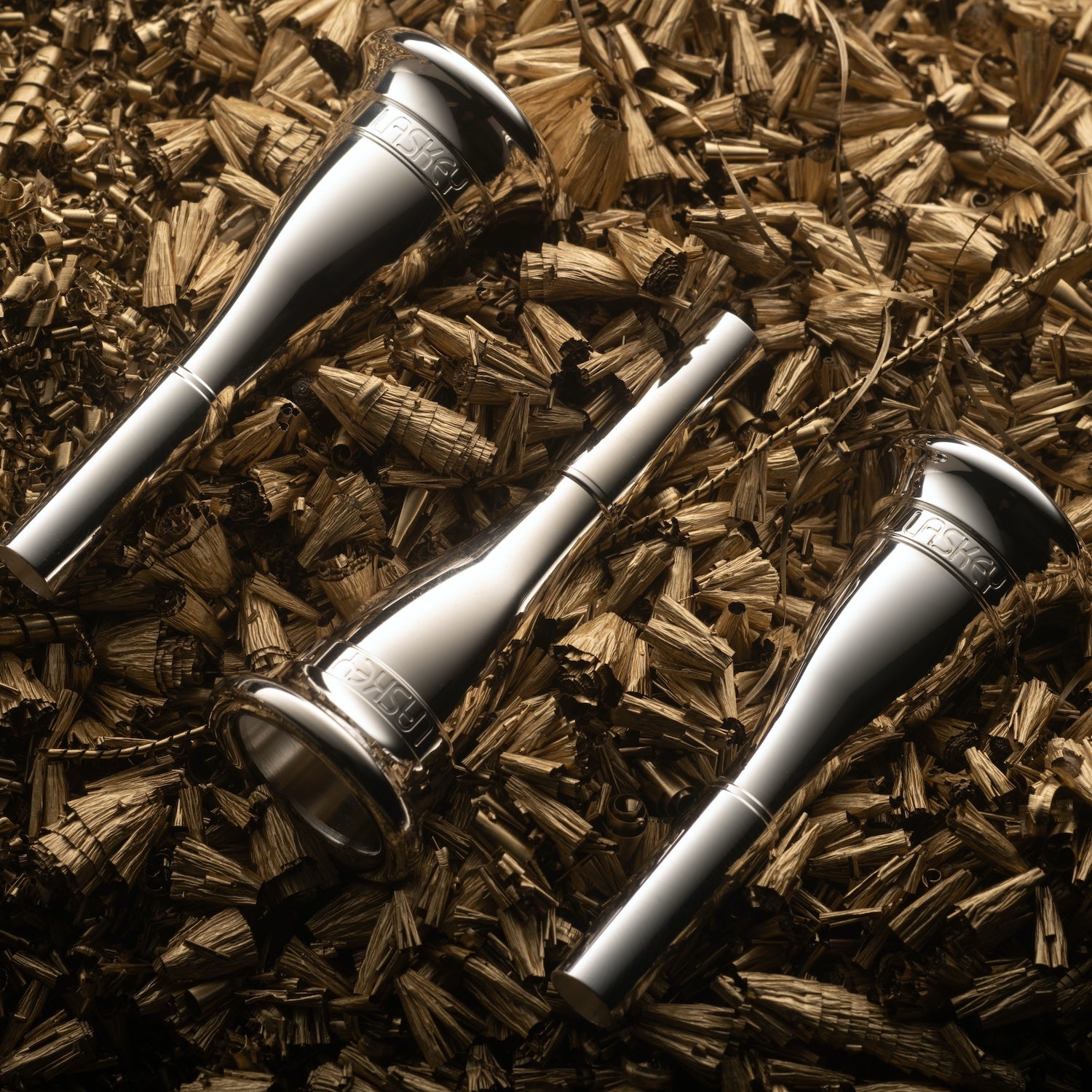This original article was written by Scott Laskey on November 29, 2015. It remains unedited.
A question about mouthpiece weight:
Recently a question came to me through Facebook asking me the difference between heavyweight and standard weight mouthpieces.
Heavy mouthpieces are not new to our industry. I remember a line of mouthpieces made by C.G. Conn called the All Star. Made originally in the late 1930’s, they were essentially Conn mouthpieces manufactured in a heavy mass mouthpiece blank. As there seem to be so few of them around anymore, I can only surmise that they were not a big success back then and didn’t last.
There are now many manufacturers who make heavy walled mouthpieces. They are made with the throat size larger to give it a more “open” feel. As an example, the Vincent Bach Company makes a line of mouthpieces called the MegaTone. They are the same mouthpieces as in their regular production line, just cut into a heavy wall blank, but they make them with one size larger throat to give it the same open feel as their regular weight mouthpiece.
From my experience and experimenting over the past 40 years, I believe that just adding weight to a mouthpiece results in a perceived concentration of the sound, but at the same time there is a loss in the ability to create color in the sound.
Here’s why
To me, as a total product, the mouthpiece has three functions when it is played.
1) As you buzz your lips, it has to reflect/refract the energy you are transmitting through it and into the instrument. Along with this:
2) As you buzz your lips and create energy, some of that energy is being absorbed by the mouthpiece and is transmitting the energy into the instrument, which is also vibrating as you play. And in conjunction with this:
3) As you are inducing energy into the mouthpiece and it is being absorbed by the mouthpiece, there is to varying degrees a loss of energy through the wall of the mouthpiece.
You may ask “Isn’t any energy loss a bad thing?” “Doesn’t that make the mouthpiece inefficient and less productive?” In working with musicians, I came to realize that the radiant energy loss creates a certain feel for the musician. The “feel” that creates the ability to add color to the sound when we play.
But are we losing anything in the total sound when the mouthpiece is vibrating along with the instrument? Are we being less efficient?
Rex Martin, professor of tuba at Northwestern University used a decibel meter to test the volume of two mouthpieces: one a heavy wall and the other a more traditional wall mouthpiece. It was his findings that the regular wall mouthpiece was able to play louder than the heavier walled mouthpiece.
So, does this mean that there is no advantage in using a heavy mouthpiece in our industry?
I think it is important to understand that it is not the weight of the mouthpiece that is important, but the mass and its location on the mouthpiece. It is one thing to have a heavy mouthpiece, but where the mass is located plays a far more important part in the design.
Back in 1978, a customer called me and was having difficulty keeping the sound intense in his upper register. The solution to his problem was to add mass to the exterior of his mouthpiece. As a performer, he loved the results and it got me thinking about mass and its distribution in the mouthpiece.
The next time I made a heavy mouthpiece was a couple of months later, for the trumpet player, Jon Faddis. Those of you who know Jon know of his range and accuracy along with his incredible ability to make music. He and I talked about adding stability to his upper register (as though he needed it). So, as an experiment, I made him a mouthpiece in an exterior shape that Lew Soloff named the CO2 mouthpiece as it resembled a CO2 cartridge stuck into a trumpet. Jon seemed pleased with the results.
Because of Jon’s popularity, I began to see other mouthpiece companies coming out with their own version of the CO2 mouthpiece.
When you look at what musicians in symphony orchestras are using today, there are very few added mass mouthpieces. I feel that this is because the sound tends to be a bit more monochromatic. There is less variance in the color of sound available. This is not to say that they are not present in classical music, but not as prevalent as they were for a while when re-introduced to the industry in the early 1980’s.
You will see more of them used in commercial music and big bands because they give the sense of a more concentrated sound and center to the note. But even there I am seeing a return to a more traditional mouthpiece mass. Jon Faddis is no longer using the CO2 mouthpiece, but is on more of a “crossover” design, not quite as large of a blank as he used to play.
As a result of the experiments I have made, I have made changes to my mouthpieces over the years. All the changes were made to the exterior shape of the mouthpiece, decreasing the weight and making areas smaller in diameter. Many musicians, including Phil Smith felt these changes dramatically improved the performance balance of the mouthpiece.
As it always should be, the mouthpiece design you use is selected by you because you feel it best for you and your ability to make music. There is no right answer other than to say that we select our mouthpiece and instrument on two levels: feel and sound.
Musicians have always had to make the decision between what plays the best and what sounds the best. To date, I have never had a conductor ask me if I was feeling good when I played.
Copyright 2021. If referencing any of the written words above, we respectfully ask that you credit Scott Laskey as the author. Thank you in advance.



